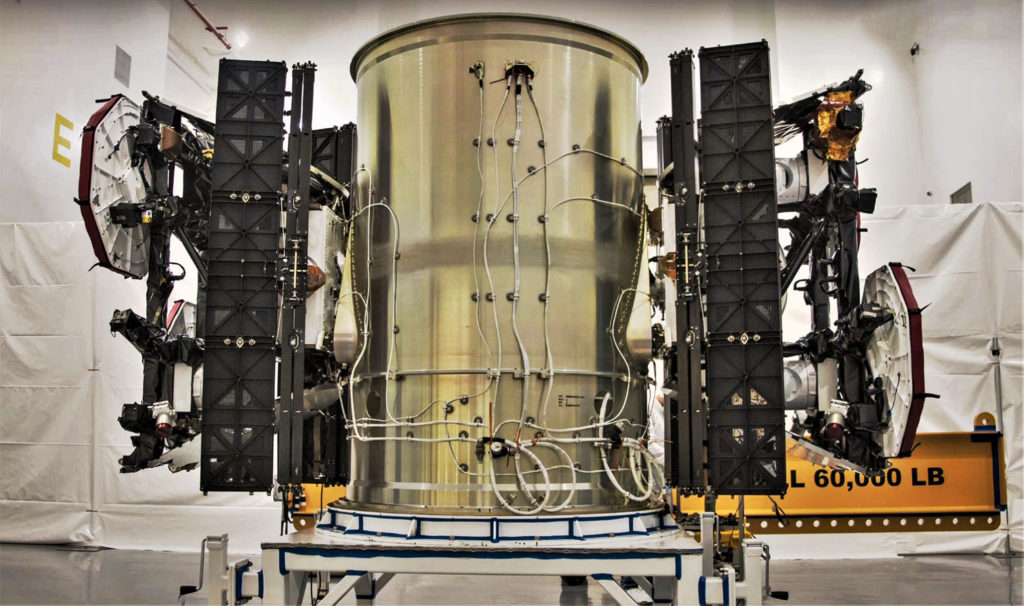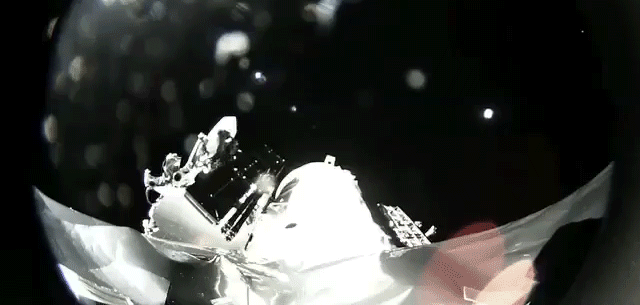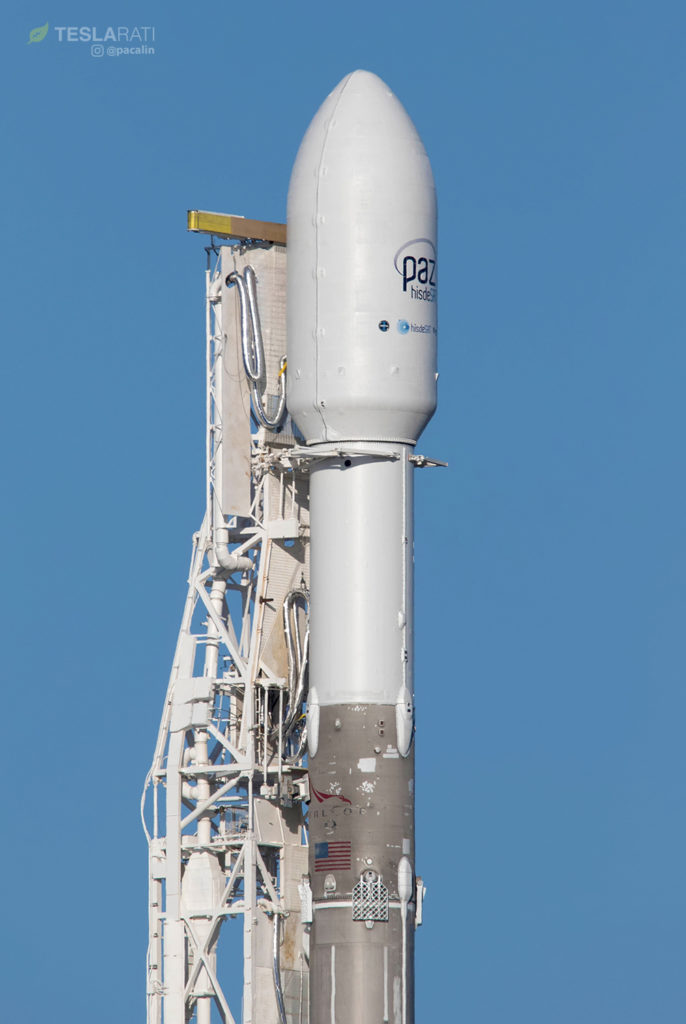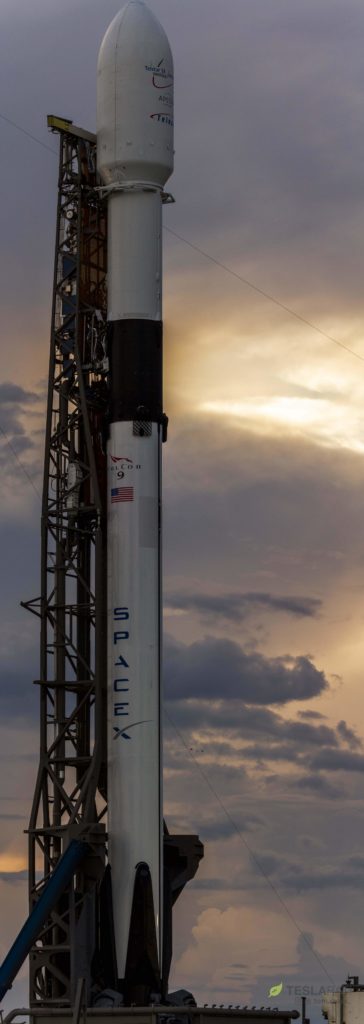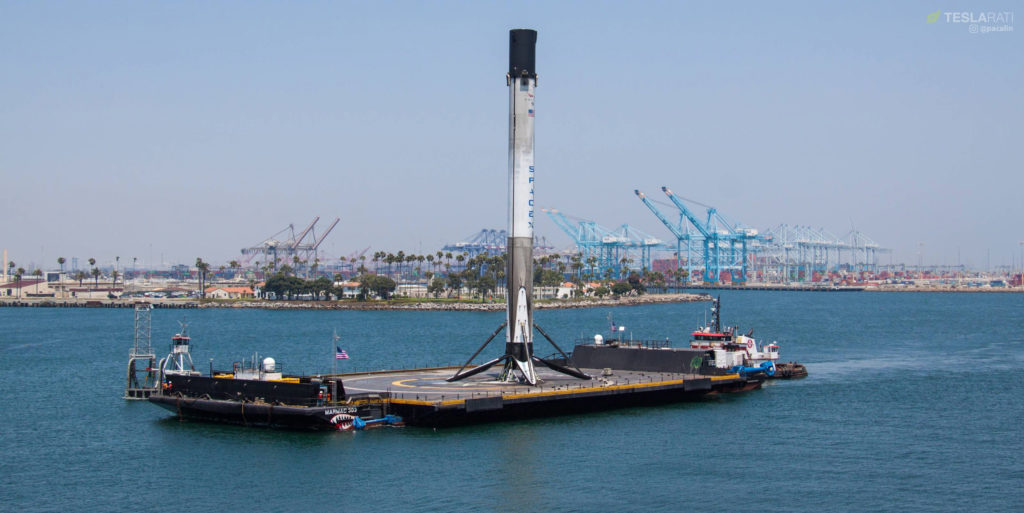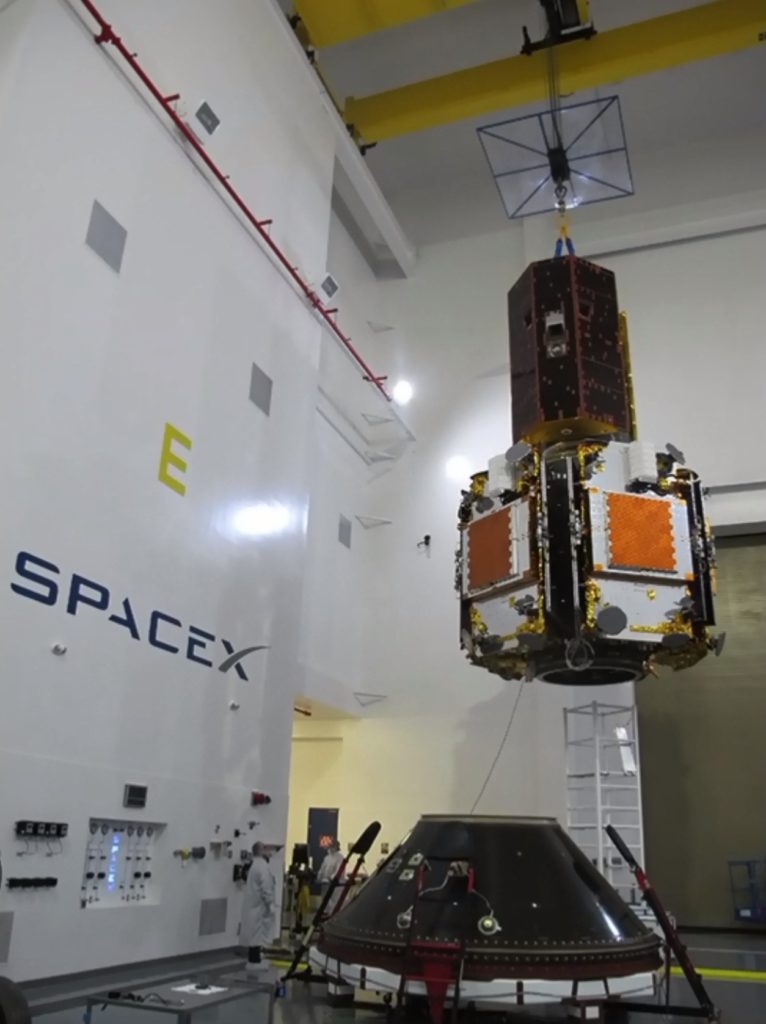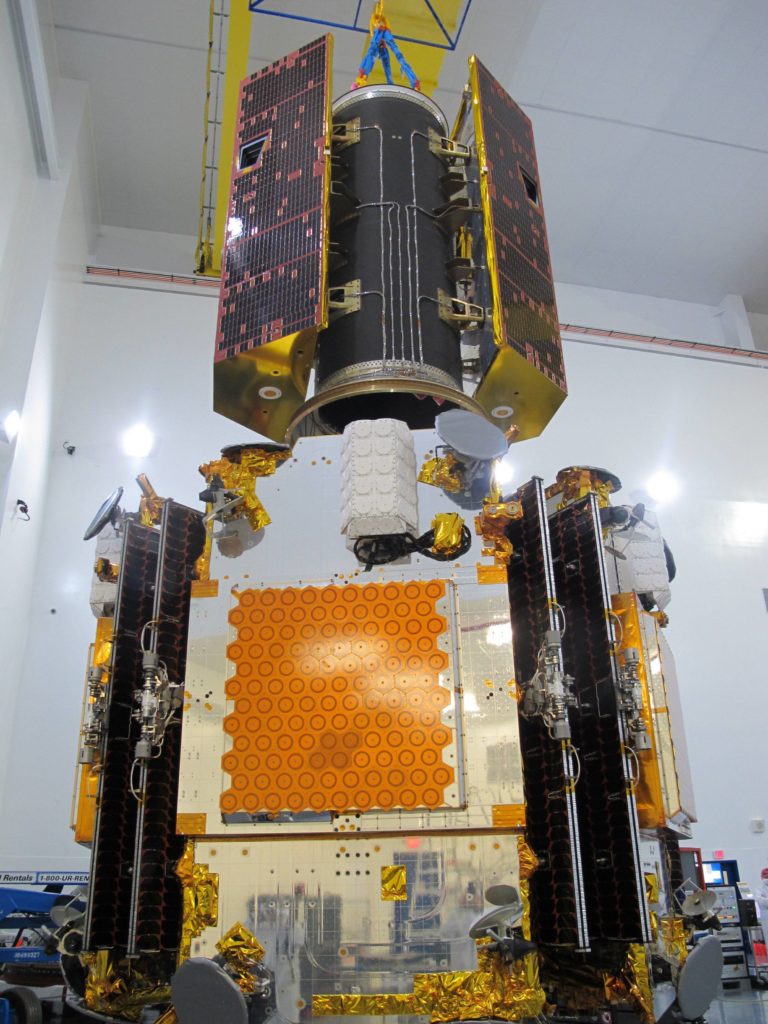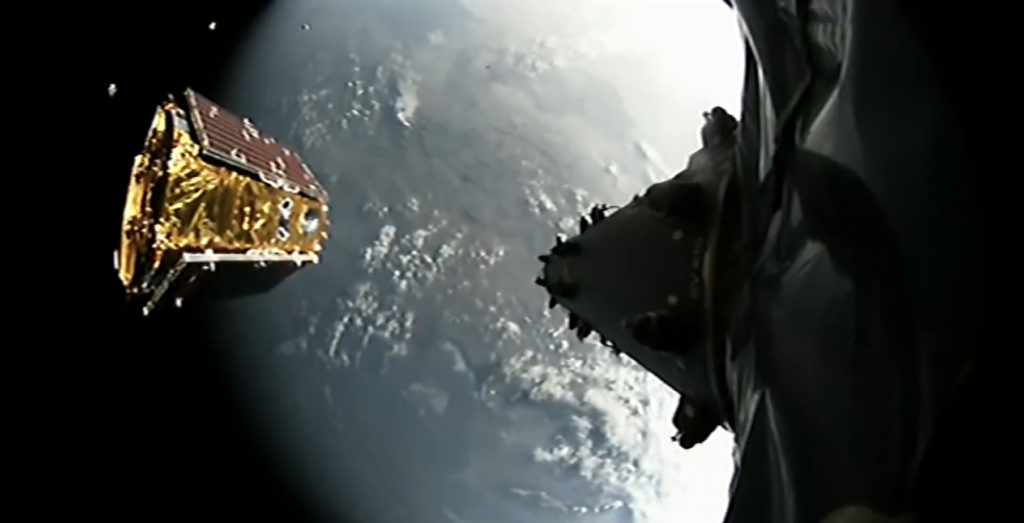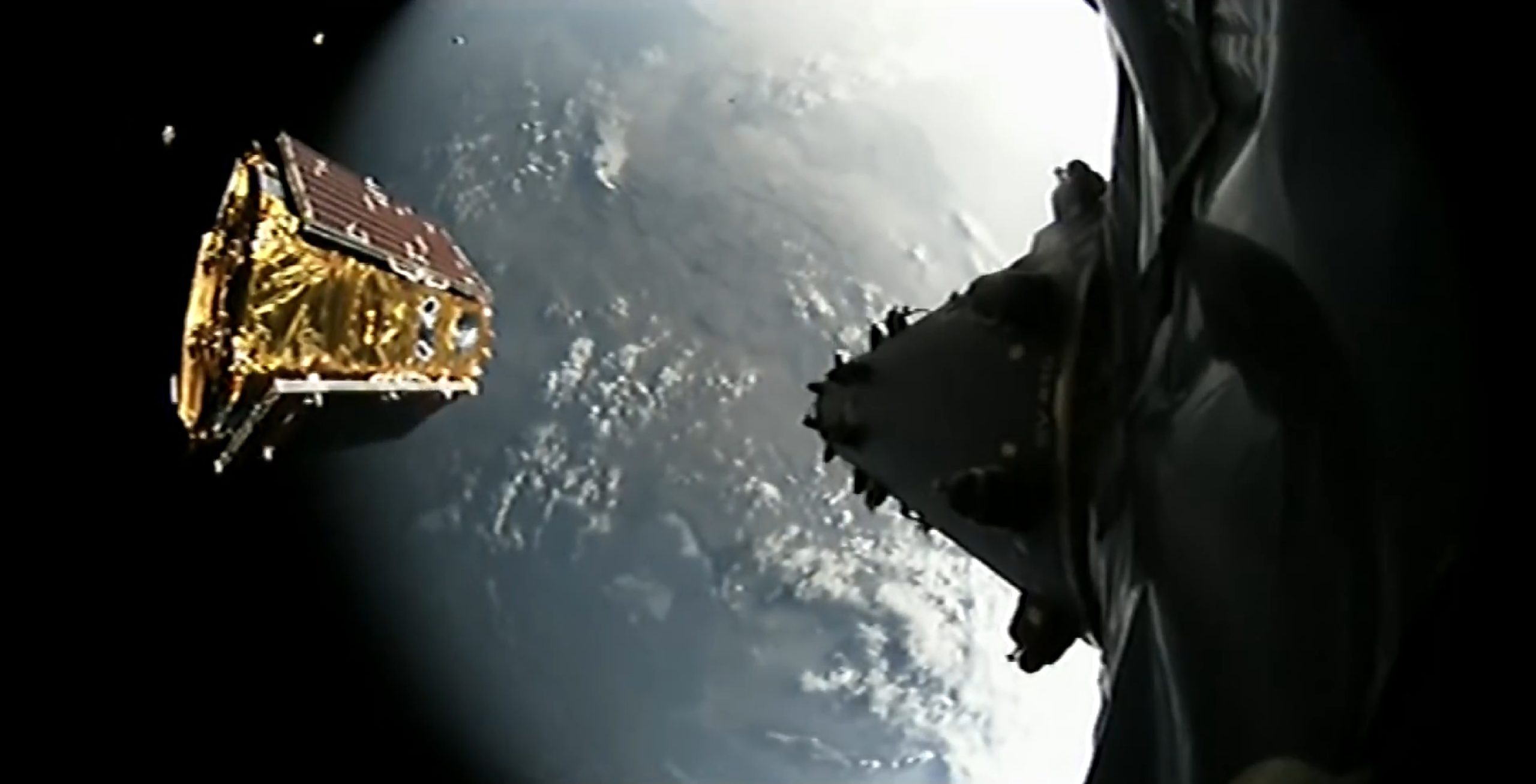
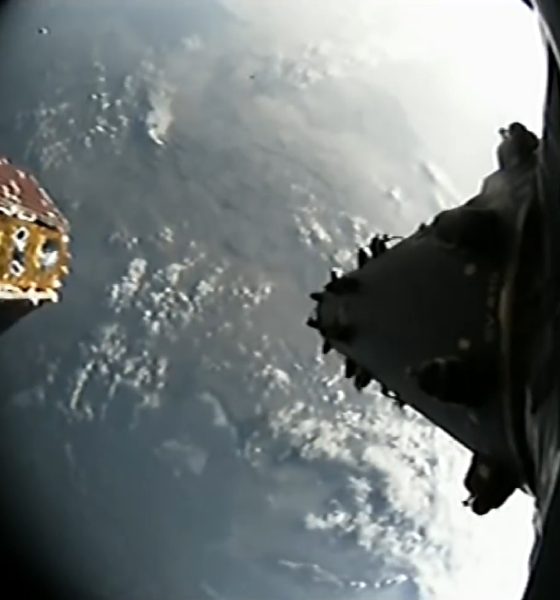
News
SpaceX’s Starlink satellites “happy and healthy” as Elon Musk fires managers and VP
Reuters is reporting that SpaceX’s Starlink internet satellite constellation project experienced significant organizational upheaval earlier this year, triggered by fundamental disagreements between CEO Elon Musk and executives overseeing Starlink as to how exactly SpaceX should approach the complex system’s development.
Despite the report’s primary focus on reorganization and Musk’s decision to simply fire 5+ key executives, SpaceX employees that spoke with Reuters were of the opinion that the two demo satellites – named Tintin A and B – are operating nominally in orbit more than half a year after launch.
The 2 test sats launched in Feb, Tintin A and B, seem to be healthy. "We’re talking with them every time they pass a ground station, dozens of times a day," one employee said. In the first week they streamed "4k YouTube and played ‘Counter-Strike: GO’ from Hawthorne to Redmond."
— Joey Roulette (@joroulette) October 31, 2018
Musk apparently believed that Starlink’s development timeline ought to be far shorter than certain senior executives overseeing the program were planning for. As a result of continuing success with the first two prototype satellites that launched in March 2018, a SpaceX engineer paraphrased Musk as being of the opinion that Starlink “can do the job with cheaper and simpler satellites, sooner.”
Rajeev Badyal, Vice President of SpaceX’s satellite program before being fired by Musk in June 2018, apparently wanted another three full iterations of prototype satellites to be launched and tested prior to beginning serious mass-production and launching the first real batch of Starlink satellites. While his extremely cautious approach may have had undeniable long-term benefits, it would also be a major hindrance in a field now rife with competitors like Telesat, OneWeb, LeoSat, and more, all eager to be first to offer internet services from low Earth orbit (LEO).
- SpaceX’s first two Starlink prototype satellites are pictured here before their inaugural launch, showing off a thoroughly utilitarian bus and several advanced components. (SpaceX)
- One of the first two prototype Starlink satellites separates from Falcon 9’s upper stage, February 2018. (SpaceX)
Prior to joining SpaceX in 2014, Badyal – like dozens of others now working on SpaceX’s Starlink constellation – worked at Microsoft for almost two decades, developing the consumer electronics and software company’s hardware programs (Zune, Xbox, Surface, etc.). In retrospect, it may not come as a huge surprise that a senior hardware development manager at Microsoft might be moderately risk-averse or at least methodical – while Surface and other more modern hardware programs have more functional iterative life cycles (usually annual), Xbox infamously spent nearly seven years between the launch of the Xbox 360 and Xbox One.
On the ground hardware side of Starlink development, user terminals, ground terminals, and other high-volume networking equipment could certainly benefit from someone like Badyal’s extensive experience developing high-volume consumer electronics like Xbox, but the Starlink satellites themselves are a different story. As a technology essentially without precedent, it could ultimately be almost anachronistically expensive to ‘refine’ the design of constellations of hundreds or thousands of high-bandwidth internet satellites before ever actually building and operating such a system.
A clash of approaches – Musk vs. Silicon Valley
What Musk instead seems to prefer – as demonstrated through his strategic direction of Tesla and SpaceX – is an approach where hardware development projects explicitly avoid striving for perfection with the first general iteration of a new system. Tesla did not spend years prototyping and performing limited tests in secret before building Model 3 as their first car ever – high-volume desirable electric vehicles simply did not exist. With SpaceX, Musk chose to explicitly develop a very small operational rocket – Falcon 1 – rather than very tediously attempting to go from scratch to Falcon 9 or BFR.
For Starlink, a Musk-style development program would fast-track a bare-minimum baseline for the satellite constellation and its ground systems, mass-producing and launching hardware that would inevitably be lacking in many ways but would still be able to act as a proving ground for the broader concepts at stake. One step further, the FCC’s Starlink constellation grant depends on an odd but unwavering requirement that SpaceX (or any other prospective LEO constellation-operator) launch at least 50% of all of any planned constellation within six years of receiving a license.
- SpaceX’s first Starlink prototypes launched in late February aboard a flight-proven Falcon 9 booster. (Pauline Acalin)
- Falcon 9 Block 5 will be absolutely critical to the success (and even the basic completion) of Starlink. (Tom Cross)
- B1048 returns to port on drone ship JRTI after its successful July 2019 launch debut. (Pauline Acalin)
For SpaceX, that means that the basic ability to commercially operate Starlink is fundamentally at risk unless the company can somehow launch a minimum of 2213 (and up to ~5950) Starlink satellites between 2018 and 2024, an almost unfathomable challenge. Assuming ~500kg per satellite and perhaps 20 satellites per Falcon 9 launch, completing 50% of Starlink by 2024 would demand – without interruption – a minimum of one launch every two weeks for five years, mid-2019 to mid-2024. As such, every month spent prototyping and refining can essentially be viewed as a month where SpaceX didn’t launch dozens of Starlink satellites in pursuit of initial operational capabilities.
The news coming from Reuters’ reporting is ultimately a very positive look at Starlink, aside from Musk’s characteristically brusque and uncompromising approach to program management and leadership. Employees spoke proudly of the operational health and overall success of the two Tintin satellites already on orbit, noting that “they’re happy and healthy [and functioning as intended], and we’re talking with them [dozens of times a day] every time they pass a ground station”. Contrary to tenuous evidence to that suggested one of the two satellites had suffered an anomaly, preventing it from operating its electric thrusters, it appears that both satellites are doing just fine.
- SpaceX is already fairly experienced with launching multi-satellite missions and building custom payload adapters. (NASA)
- During a normal Iridium NEXT launch, two groups of five satellites are stacked on top of each other. Here, the top stack was replaced by NASA/DLR’s GRACE-FO spacecraft. (NASA)
- A spectacular view of Iridium NEXT satellites during orbital deployment. Starlink deployment will be even more of a spectacle. (SpaceX)
Up next for Starlink is the launch of a second batch of demonstration satellites, expected to occur “in short order” according to an official SpaceX comment on the matter.
“Given the success of our recent Starlink demonstration satellites, we have incorporated lessons learned and re-organized to allow for the next design iteration to be flown in short order.” – SpaceX spokesperson Eva Behrend
Musk’s ultimate hope with this reorganization is to push Starlink to begin operational satellite launches as early as mid-2019, an ambitious goal to say the least. Understandably, the intent with such an expedited schedule would be to continuously modify, update, and improve Starlink satellite, terminal, and network designs at the same time as they are being built and operated. Much like SpaceX and Tesla, this helps to ensure that the ultimate result of development is a rapid initial product offering eventually followed by a highly-optimized ‘finished’ product.
For prompt updates, on-the-ground perspectives, and unique glimpses of SpaceX’s rocket recovery fleet check out our brand new LaunchPad and LandingZone newsletters!

News
Tesla FSD fleet is nearing 7 billion total miles, including 2.5 billion city miles
As can be seen on Tesla’s official FSD webpage, vehicles equipped with the system have now navigated over 6.99 billion miles.

Tesla’s Full Self-Driving (Supervised) fleet is closing in on almost 7 billion total miles driven, as per data posted by the company on its official FSD webpage.
These figures hint at the massive scale of data fueling Tesla’s rapid FSD improvements, which have been quite notable as of late.
FSD mileage milestones
As can be seen on Tesla’s official FSD webpage, vehicles equipped with the system have now navigated over 6.99 billion miles. Tesla owner and avid FSD tester Whole Mars Catalog also shared a screenshot indicating that from the nearly 7 billion miles traveled by the FSD fleet, more than 2.5 billion miles were driven inside cities.
City miles are particularly valuable for complex urban scenarios like unprotected turns, pedestrian interactions, and traffic lights. This is also the difference-maker for FSD, as only complex solutions, such as Waymo’s self-driving taxis, operate similarly on inner-city streets. And even then, incidents such as the San Francisco blackouts have proven challenging for sensor-rich vehicles like Waymos.
Tesla’s data edge
Tesla has a number of advantages in the autonomous vehicle sector, one of which is the size of its fleet and the number of vehicles training FSD on real-world roads. Tesla’s nearly 7 billion FSD miles then allow the company to roll out updates that make its vehicles behave like they are being driven by experienced drivers, even if they are operating on their own.
So notable are Tesla’s improvements to FSD that NVIDIA Director of Robotics Jim Fan, after experiencing FSD v14, noted that the system is the first AI that passes what he described as a “Physical Turing Test.”
“Despite knowing exactly how robot learning works, I still find it magical watching the steering wheel turn by itself. First it feels surreal, next it becomes routine. Then, like the smartphone, taking it away actively hurts. This is how humanity gets rewired and glued to god-like technologies,” Fan wrote in a post on X.
News
Tesla starts showing how FSD will change lives in Europe
Local officials tested the system on narrow country roads and were impressed by FSD’s smooth, human-like driving, with some calling the service a game-changer for everyday life in areas that are far from urban centers.

Tesla has launched Europe’s first public shuttle service using Full Self-Driving (Supervised) in the rural Eifelkreis Bitburg-Prüm region of Germany, demonstrating how the technology can restore independence and mobility for people who struggle with limited transport options.
Local officials tested the system on narrow country roads and were impressed by FSD’s smooth, human-like driving, with some calling the service a game-changer for everyday life in areas that are far from urban centers.
Officials see real impact on rural residents
Arzfeld Mayor Johannes Kuhl and District Administrator Andreas Kruppert personally tested the Tesla shuttle service. This allowed them to see just how well FSD navigated winding lanes and rural roads confidently. Kruppert said, “Autonomous driving sounds like science fiction to many, but we simply see here that it works totally well in rural regions too.” Kuhl, for his part, also noted that FSD “feels like a very experienced driver.”
The pilot complements the area’s “Citizen Bus” program, which provides on-demand rides for elderly residents who can no longer drive themselves. Tesla Europe shared a video of a demonstration of the service, highlighting how FSD gives people their freedom back, even in places where public transport is not as prevalent.
What the Ministry for Economic Affairs and Transport says
Rhineland-Palatinate’s Minister Daniela Schmitt supported the project, praising the collaboration that made this “first of its kind in Europe” possible. As per the ministry, the rural rollout for the service shows FSD’s potential beyond major cities, and it delivers tangible benefits like grocery runs, doctor visits, and social connections for isolated residents.
“Reliable and flexible mobility is especially vital in rural areas. With the launch of a shuttle service using self-driving vehicles (FSD supervised) by Tesla in the Eifelkreis Bitburg-Prüm, an innovative pilot project is now getting underway that complements local community bus services. It is the first project of its kind in Europe.
“The result is a real gain for rural mobility: greater accessibility, more flexibility and tangible benefits for everyday life. A strong signal for innovation, cooperation and future-oriented mobility beyond urban centers,” the ministry wrote in a LinkedIn post.
News
Tesla China quietly posts Robotaxi-related job listing
Tesla China is currently seeking a Low Voltage Electrical Engineer to work on circuit board design for the company’s autonomous vehicles.

Tesla has posted a new job listing in Shanghai explicitly tied to its Robotaxi program, fueling speculation that the company is preparing to launch its dedicated autonomous ride-hailing service in China.
As noted in the listing, Tesla China is currently seeking a Low Voltage Electrical Engineer to work on circuit board design for the company’s autonomous vehicles.
Robotaxi-specific role
The listing, which was shared on social media platform X by industry watcher @tslaming, suggested that Tesla China is looking to fill the role urgently. The job listing itself specifically mentions that the person hired for the role will be working on the Low Voltage Hardware team, which would design the circuit boards that would serve as the nervous system of the Robotaxi.
Key tasks for the role, as indicated in the job listing, include collaboration with PCB layout, firmware, mechanical, program management, and validation teams, among other responsibilities. The role is based in Shanghai.
China Robotaxi launch
China represents a massive potential market for robotaxis, with its dense urban centers and supportive policies in select cities. Tesla has limited permission to roll out FSD in the country, though despite this, its vehicles have been hailed as among the best in the market when it comes to autonomous features. So far, at least, it appears that China supports Tesla’s FSD and Robotaxi rollout.
This was hinted at in November, when Tesla brought the Cybercab to the 8th China International Import Expo (CIIE) in Shanghai, marking the first time that the autonomous two-seater was brought to the Asia-Pacific region. The vehicle, despite not having a release date in China, received a significant amount of interest among the event’s attendees.
